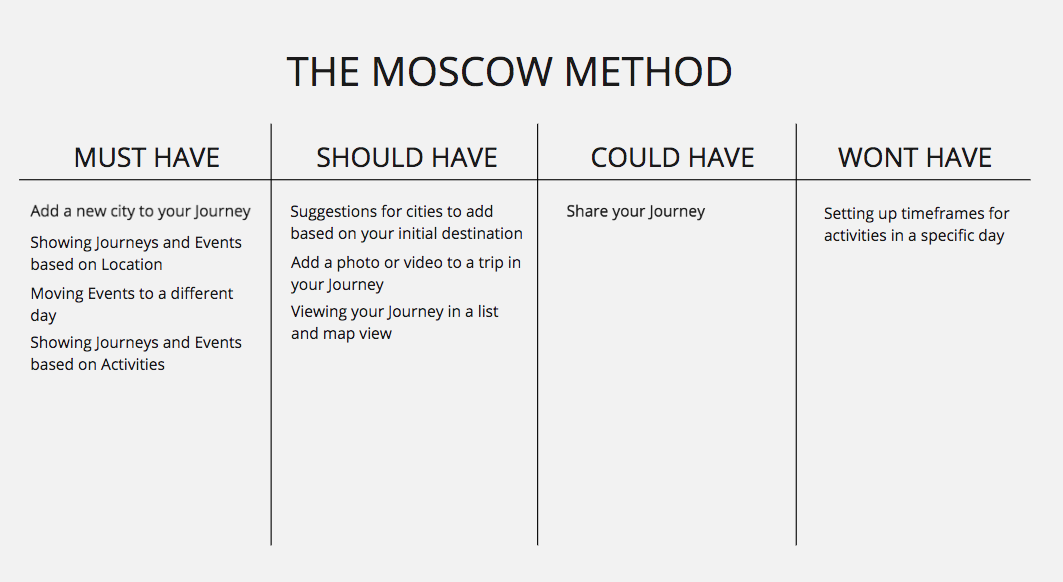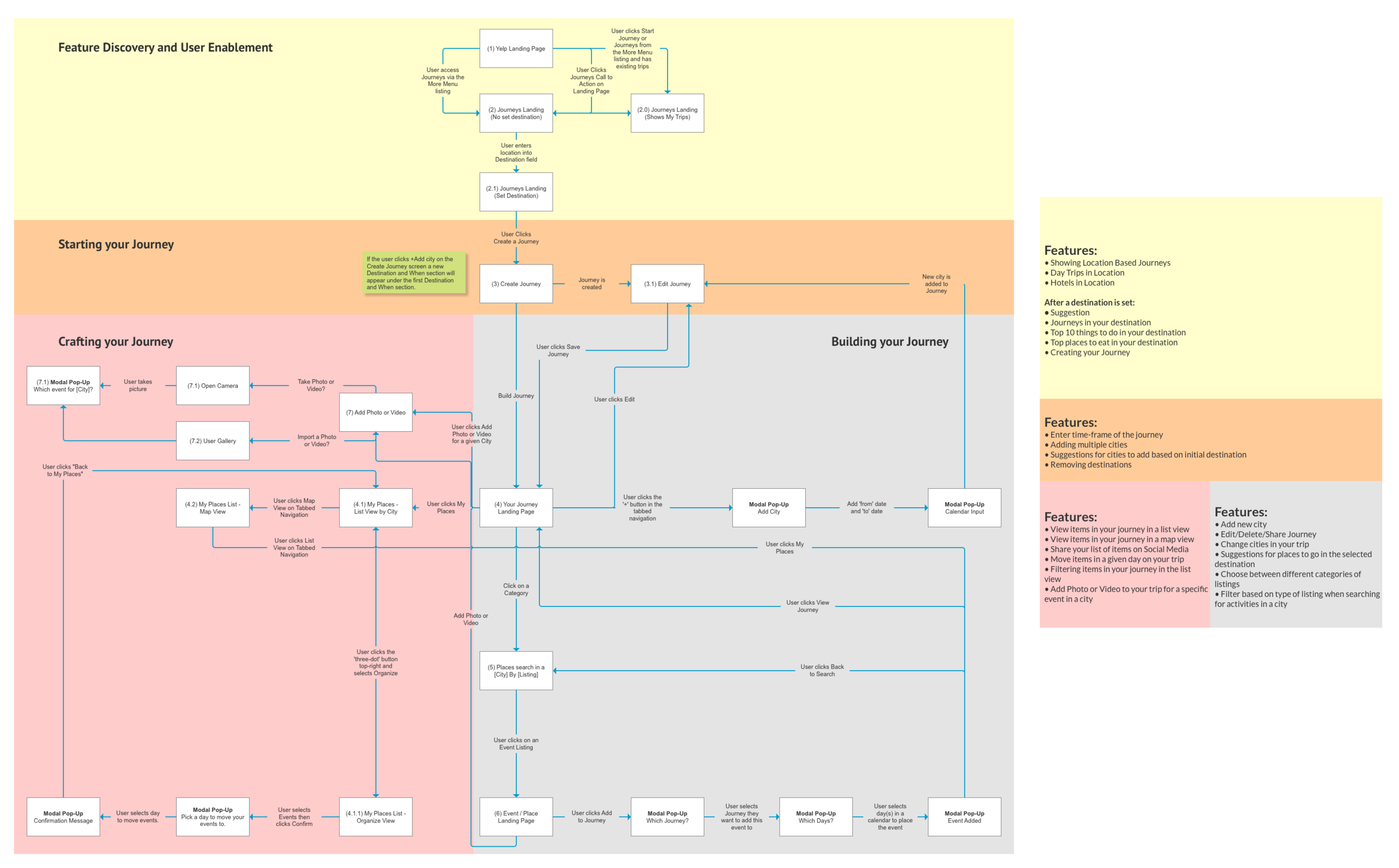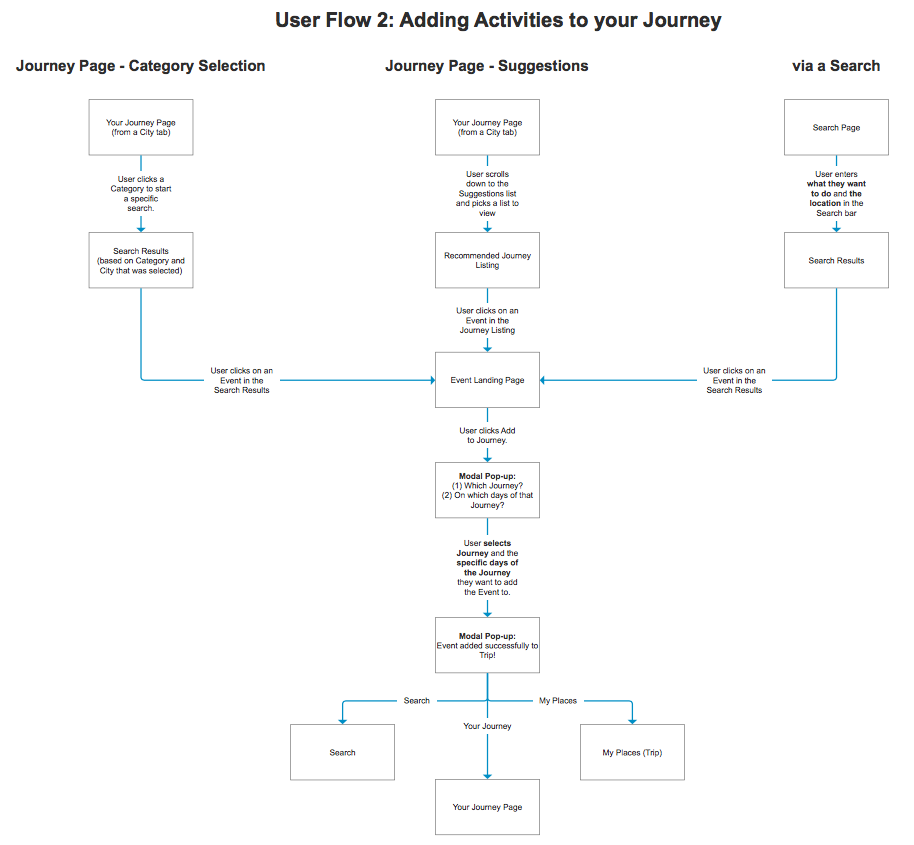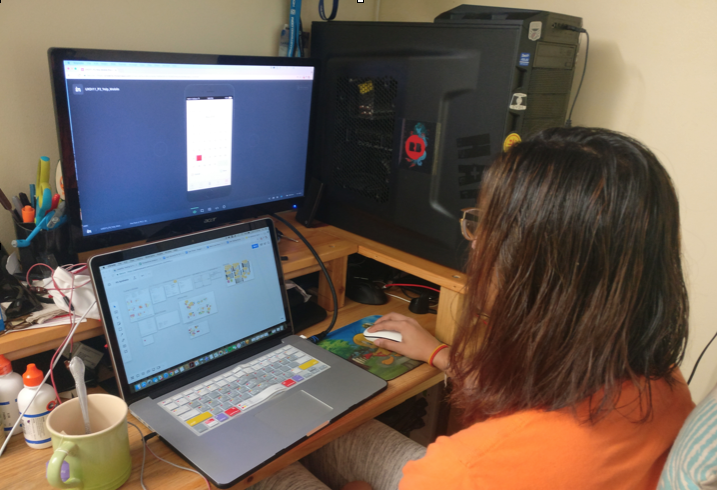A feature for the Yelp app allowing users to create itineraries
for their travel, and record their travel experiences.
OVERVIEW
This project was a two week sprint completed in an agile environment. My team of four started with a detailed project plan and timeline created in Trello. Our project brief required that we design a feature for the Yelp app allowing users to create itineraries for their travels, and record their travel experiences.
Yelp is the go-to app that publishes crowd-sourced reviews about local businesses, and offers an online reservation service, Yelp Reservations.
THE PROCESS
MY CONTRIBUTIONS
- User Interviews
- Competitive Analysis
- Heuristic Analysis
- Affinity Diagrams
- Personas
- Prototype Sketches
- Ideation
- Wireframes
- Visual Design
- Humor
THE PROBLEM
Our users need a reliable way to plan, organize, and record their journey to unfamiliar locations, because Yelp currently does not have this capability.
THE SOLUTION
We believe that by offering our users the ability to record personal experiences, plan and explore events, businesses, and activities in specific locations we will empower planners and explorers of destinations to craft a journey of their travel experience(s) while recording their journeys from start to finish. We will know this to be true when our users share their experiences and/or are inspired by real experiences of friends, family, and other Yelp users.
We began the research phase of our process knowing we would need to:
Understand users
search process
Design a flow to
create itineraries
Design a flow to
record journeys
RESEARCH & DISCOVERY
SCREENER
Our app research began with a screener to find users to interview who currently use the Yelp app on a regular basis. We also wanted to determine which apps these same people typically used when planning a travel itinerary. It was important that we understand how users plan trips, what kind of travelers they are, and how our users interact with reviews.
SURVEY
We sent out a survey on Linkedin and through email looking for people who use the Yelp app. As expected, it wasn't difficult to find potential interview participants. We asked a series of questions about how individuals use Yelp. The answers helped us identify who we would interview. We were hoping to find some "super Yelpers".
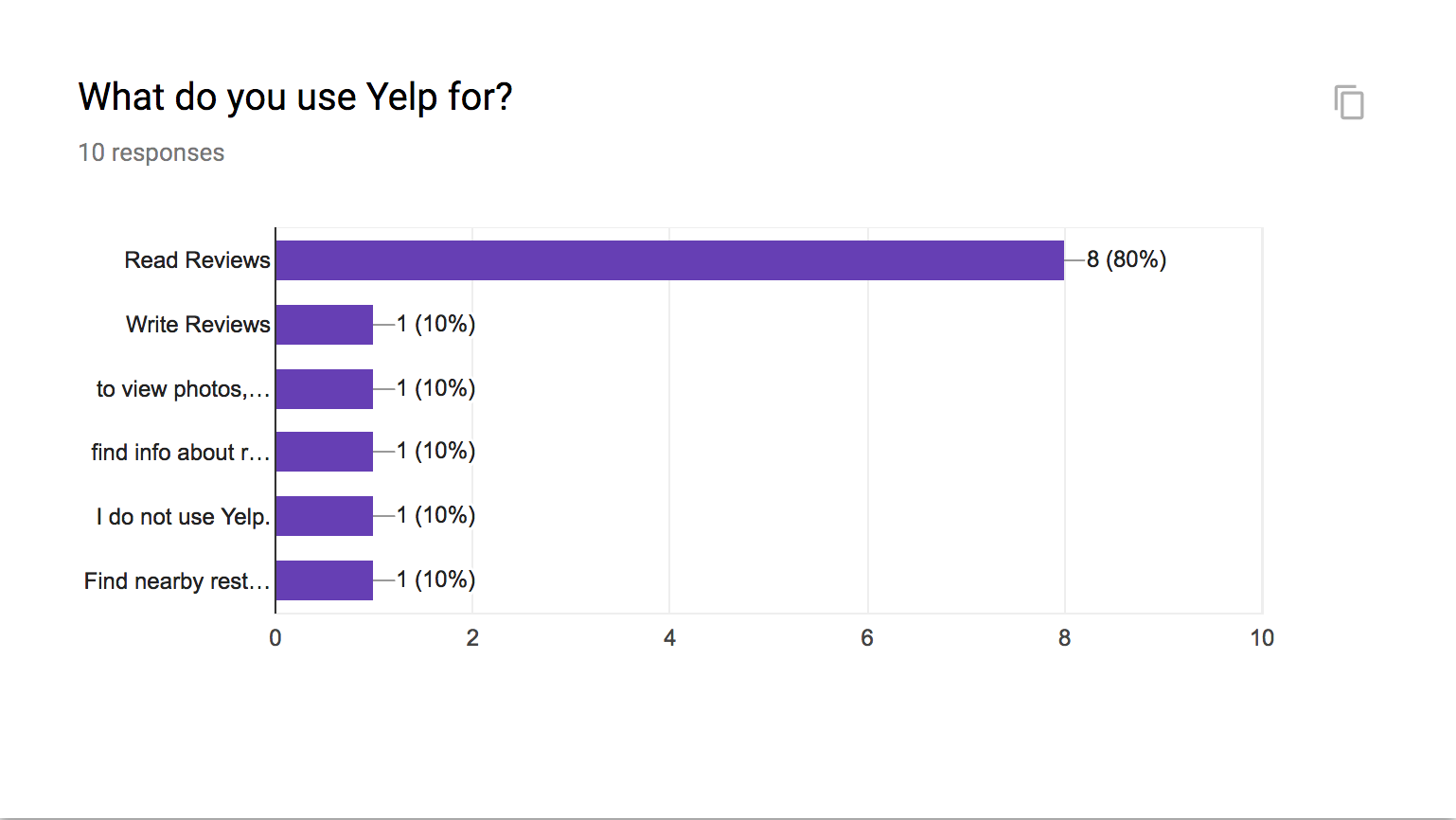
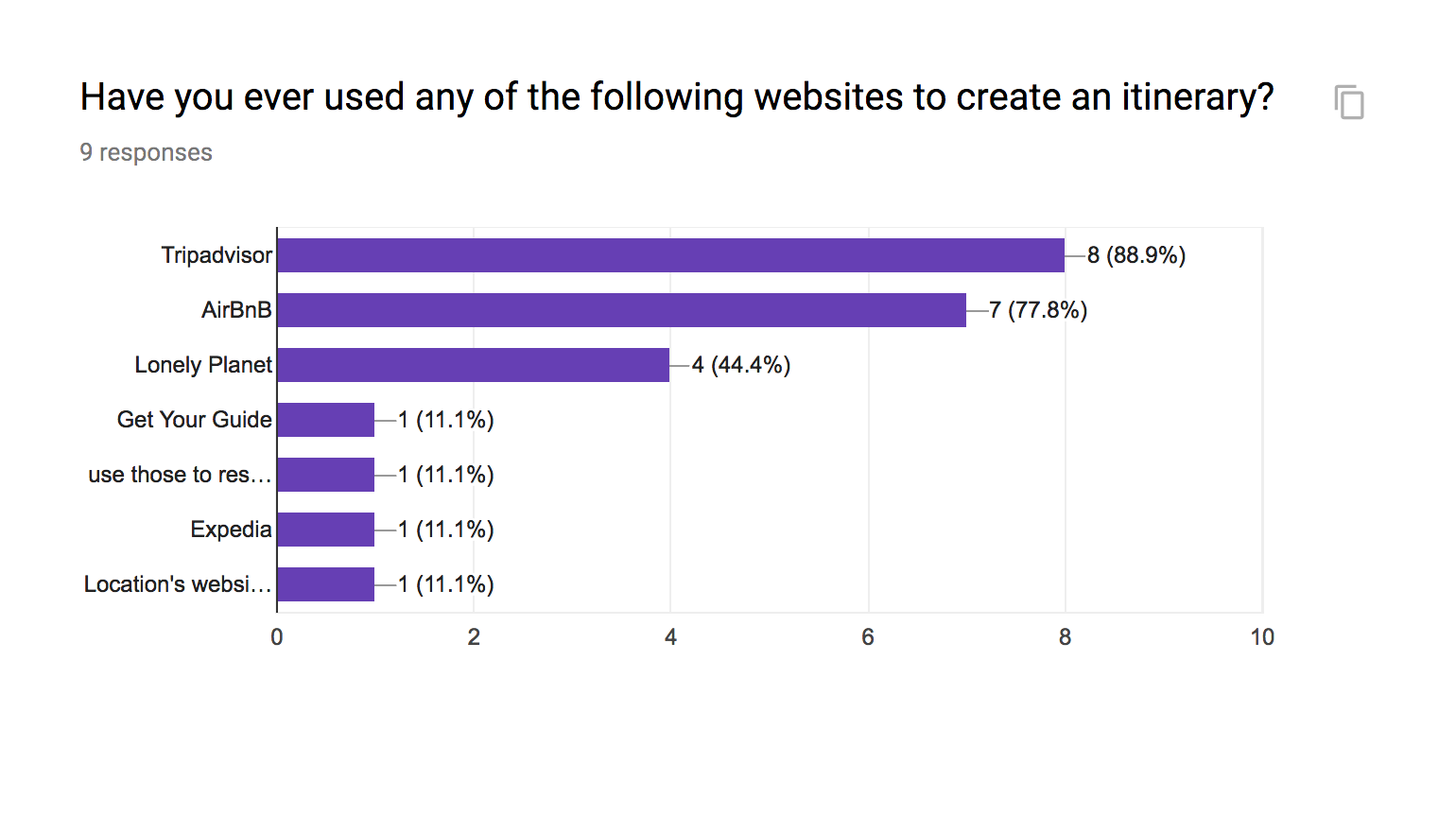
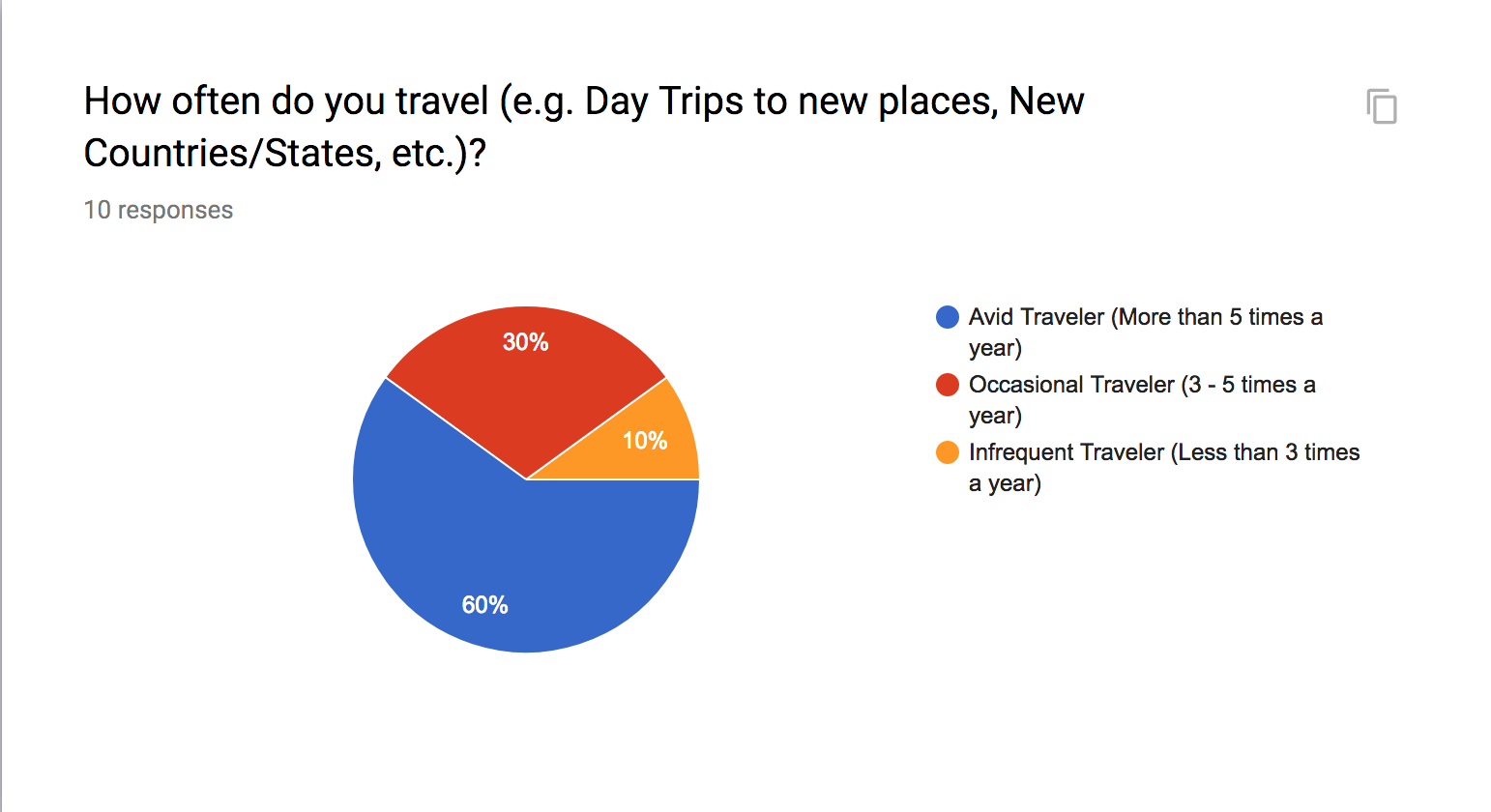
USER INTERVIEWS
We interviewed 9 people and our research revealed the following:
- Our users wanted to be in control of their travel plans. They weren’t interested in pre-made itineraries.
- Although they wanted to plan their own trips, they wanted ideas along the way
- Our users wanted to have a planner where they could see all of their activities for the day and change things around as needed
- They wanted to start planning with the recommendations of other users
User interviews revealed that future customers would want to:
Browse reviews and recommendations
Add events to the calendar
Record their experiences
Easily move events
Share their journeys
Get location based
suggestions
COMPETITIVE REVIEW
My team performed a competitive review of several other travel and itinerary apps. Nielsen's 10 heuristics were taken into account as we gathered quantitative data. Our competitors provided us with some great guidelines, but none of them encapsulated everything we were tying to accomplish. Which was a good thing.
AFFINITY DIAGRAM
"I want to see recommendations of what I could start with."
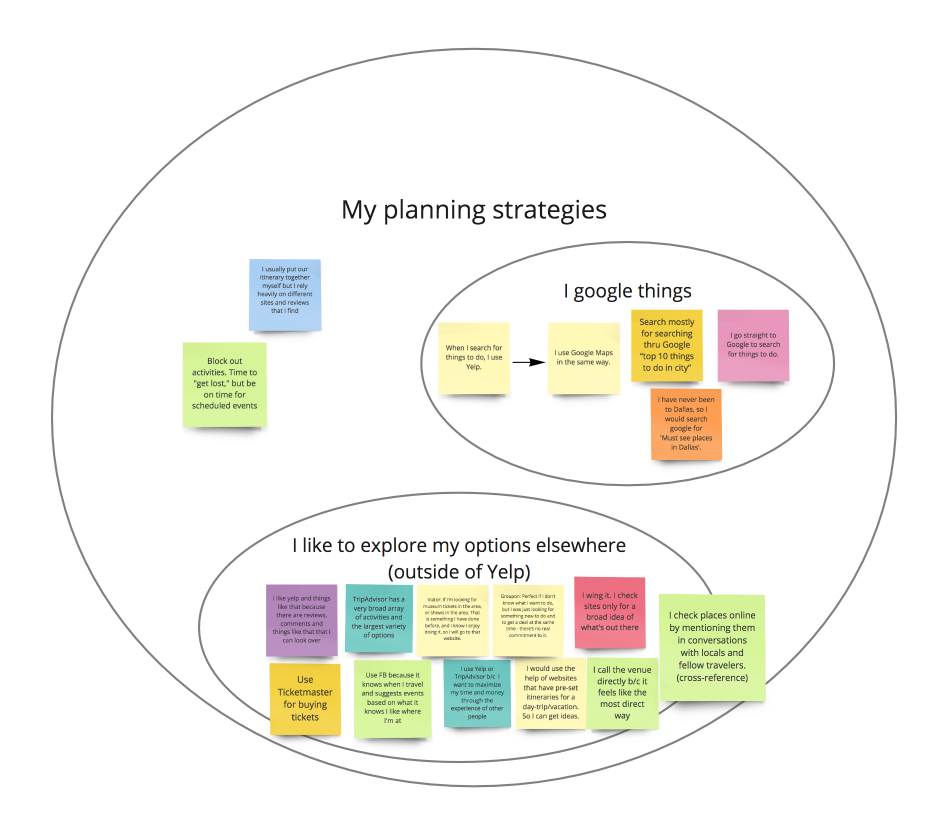
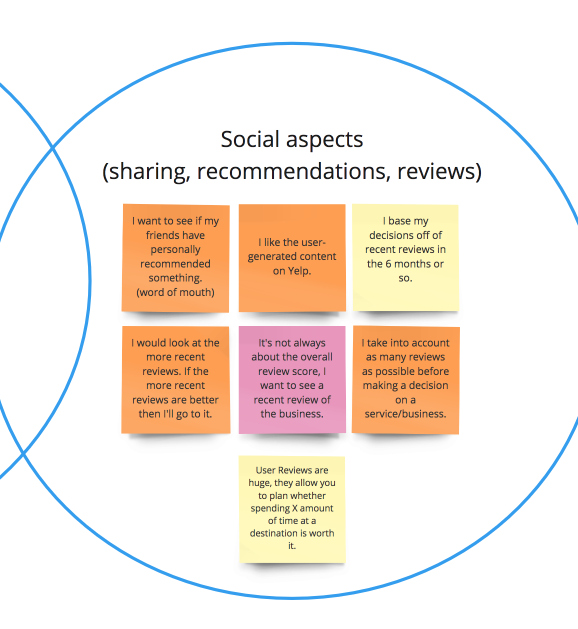
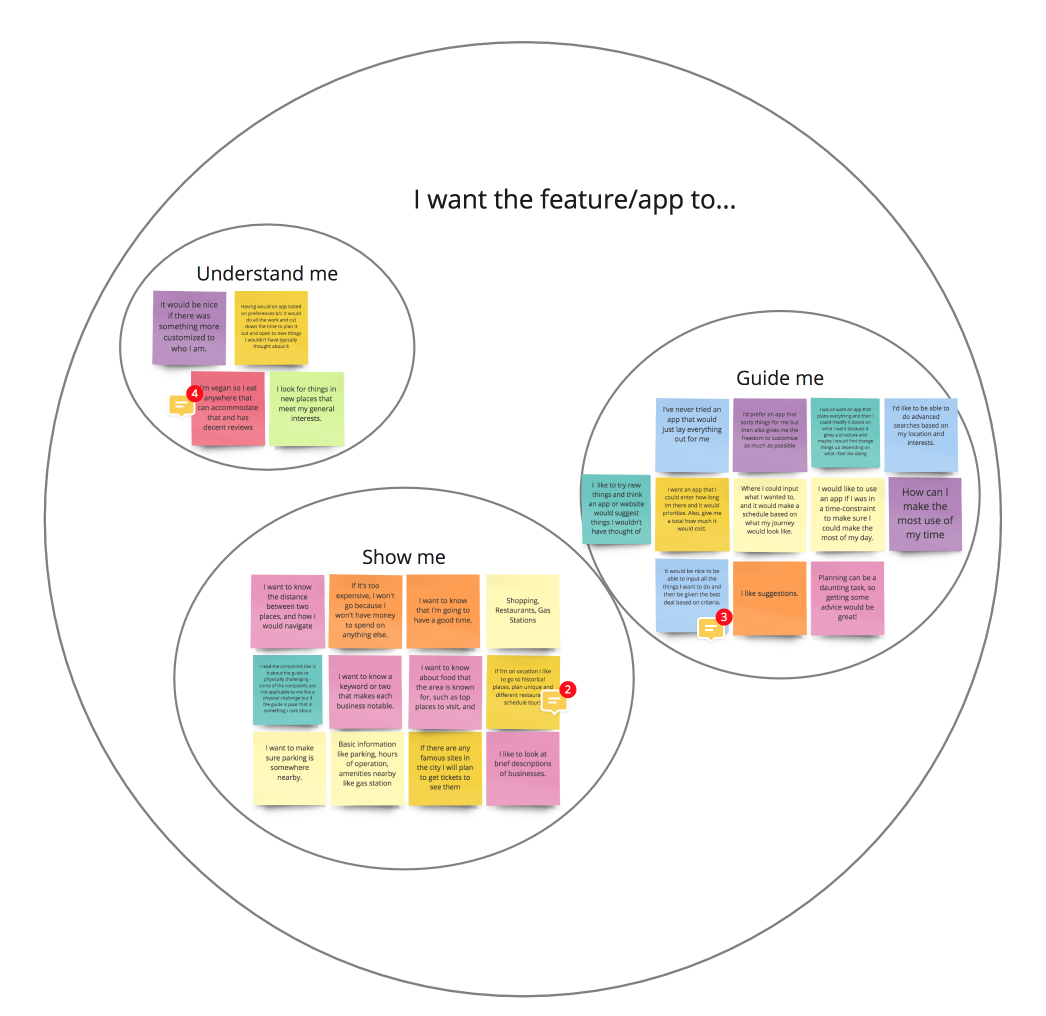
"I'd like a planner, where I can see all of my activities for the day
and change things around as I need to."
USER PERSONAS
After synthesizing the information gathered from our affinity diagrams, competitive analysis and user interviews, we developed a primary and secondary user persona. We would regularly reference our personas throughout the ideation process to develop user flows, user journeys and scenarios.
FEATURE PRIORITIZATION
Using a 2x2 matrix and the Moscow Method we determined what was going to be priority, what would be unexpected and what was just completely out of scope.
This project could easily go off the rails and way out of scope.
We discussed the fact that we weren't booking travel plans or hotels. We were using the same model as the existing Yelp app, but adding a feature for travelers to plan their trip.
SKETCHING & IDEATION
APP MAP, STORYBOARDS AND USER JOURNEYS
App maps detailing the placement of new features in relation to existing Yelp site content were developed in Sketch. User flow diagrams were developed using Sketch to show the user-side logic required to create a journey in Yelp. Use cases and scenarios were developed to understand how target users would interact with the new feature.
SKETCHING
I began the initial sketching and ideating and these sketches were iterated upon by my teammate. Once we had the screens relatively nailed down, we were able to test the paper prototypes to determine if our flow was working or not.
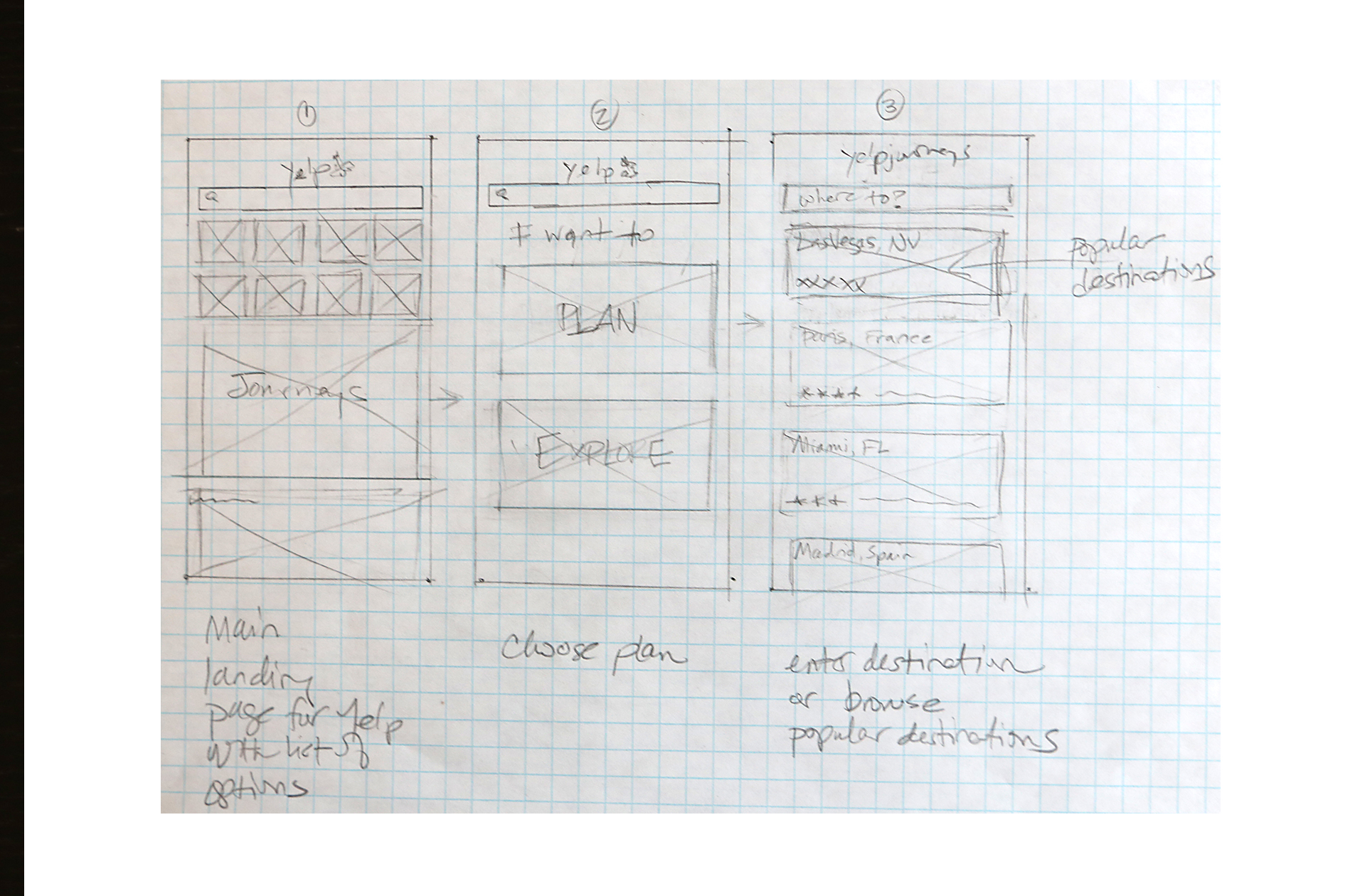
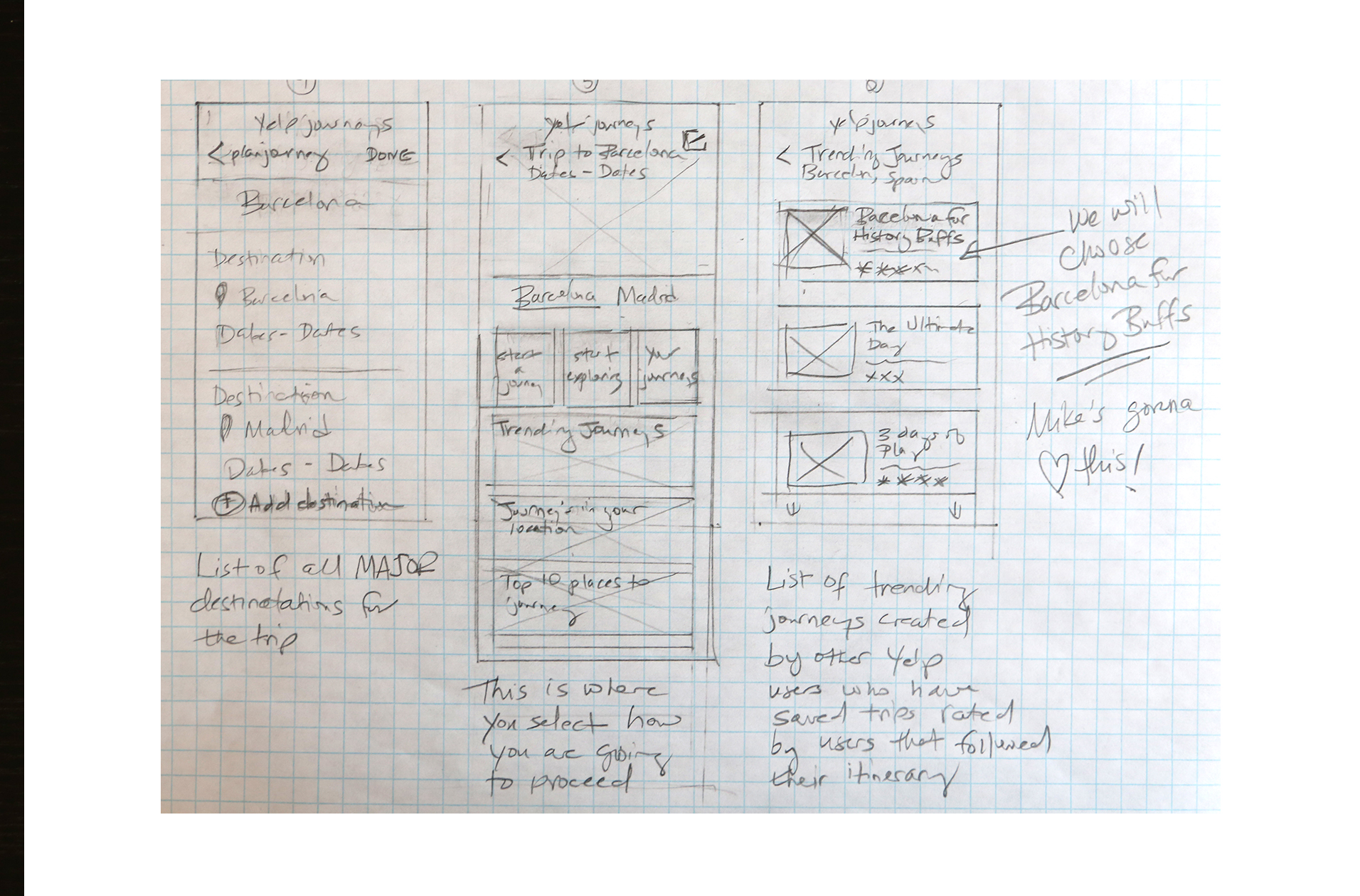
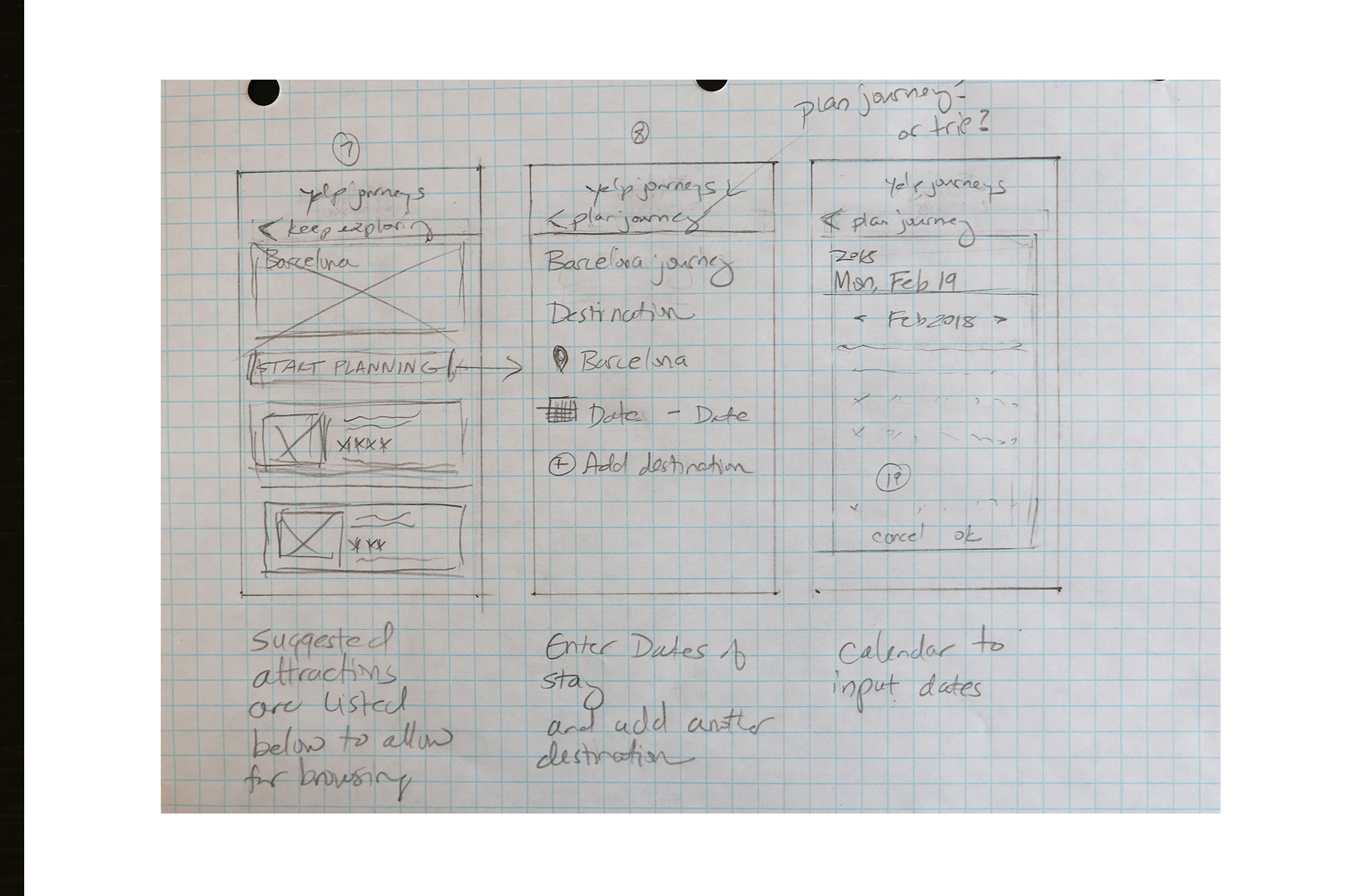
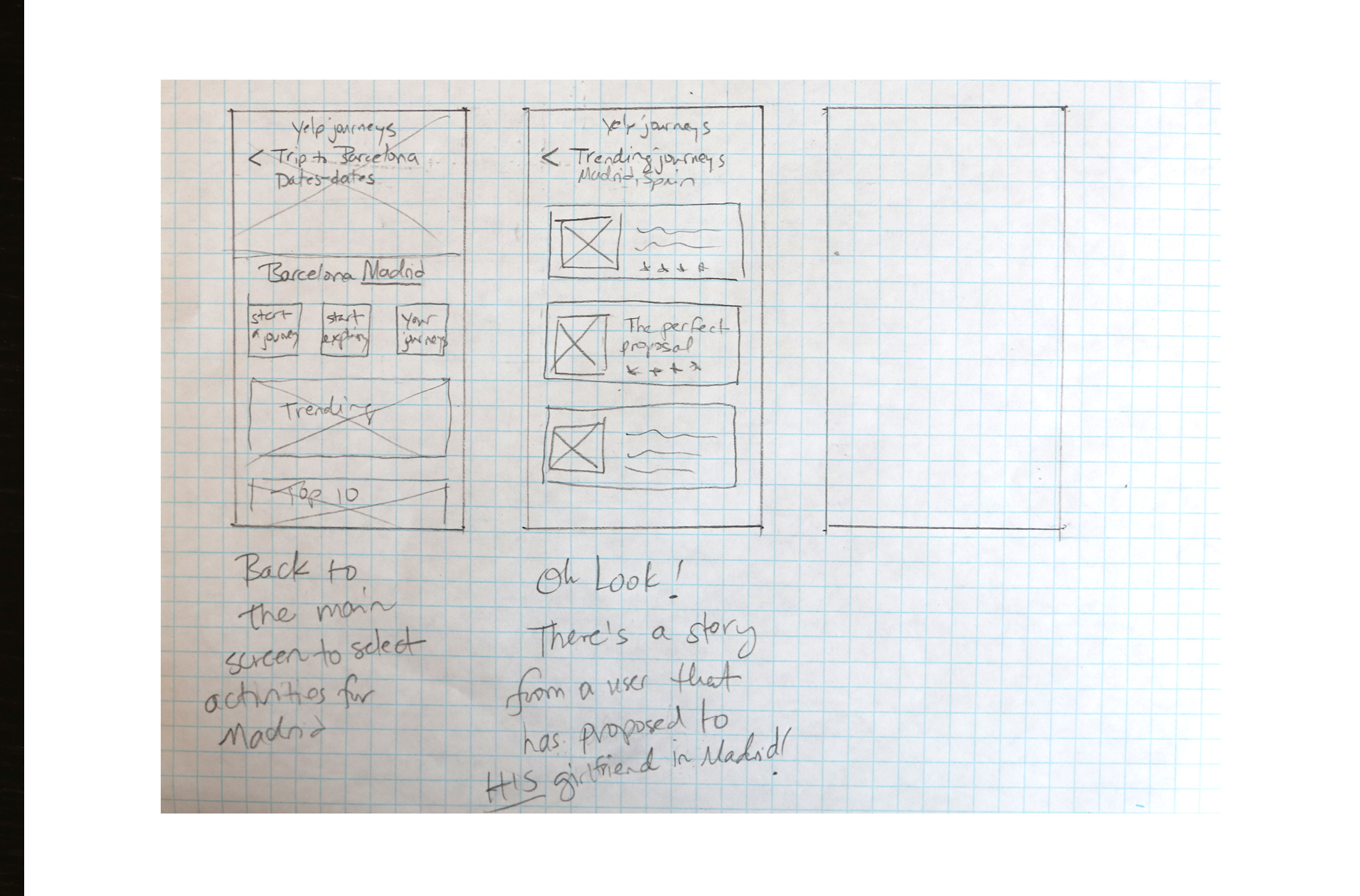
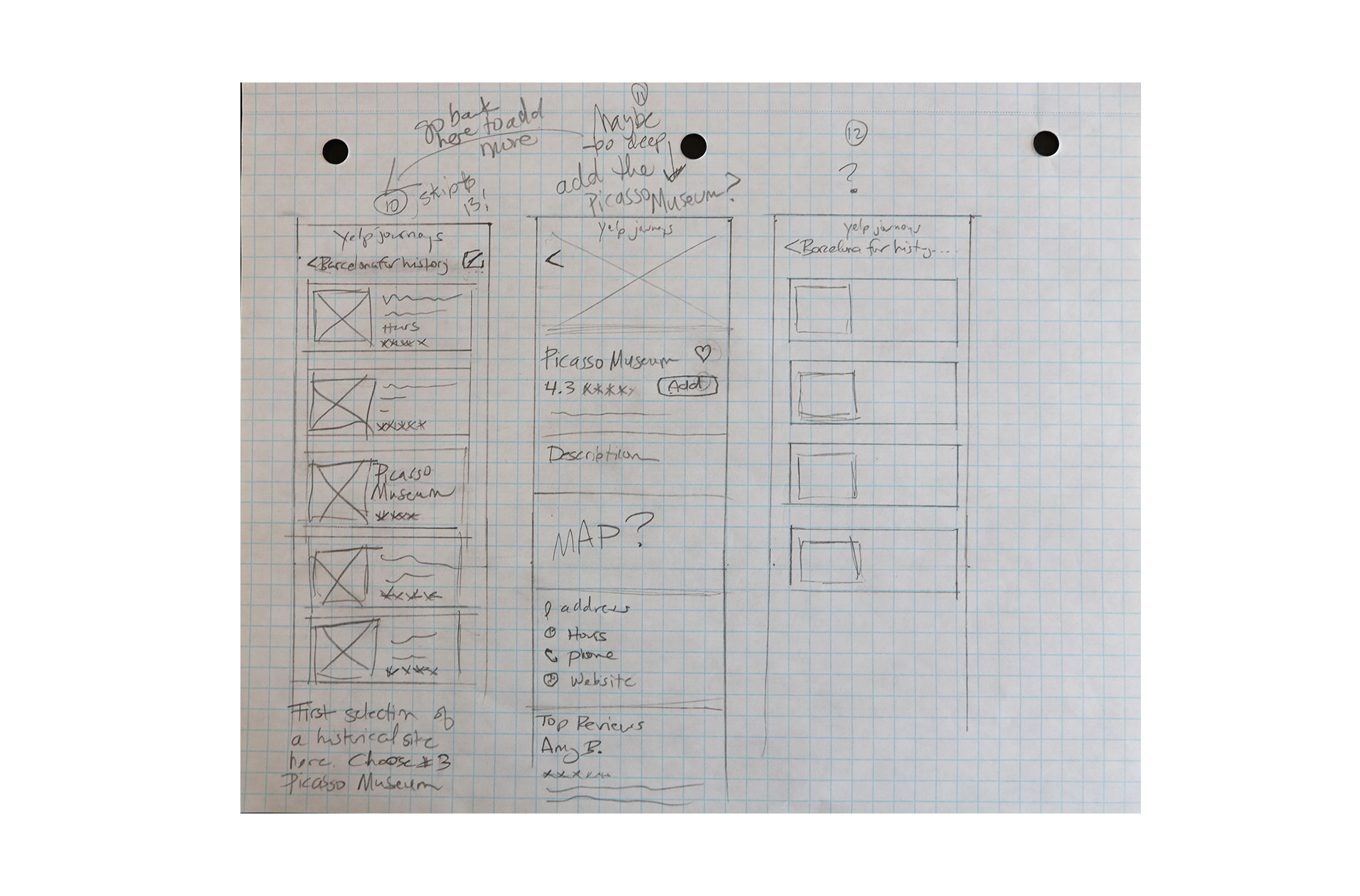
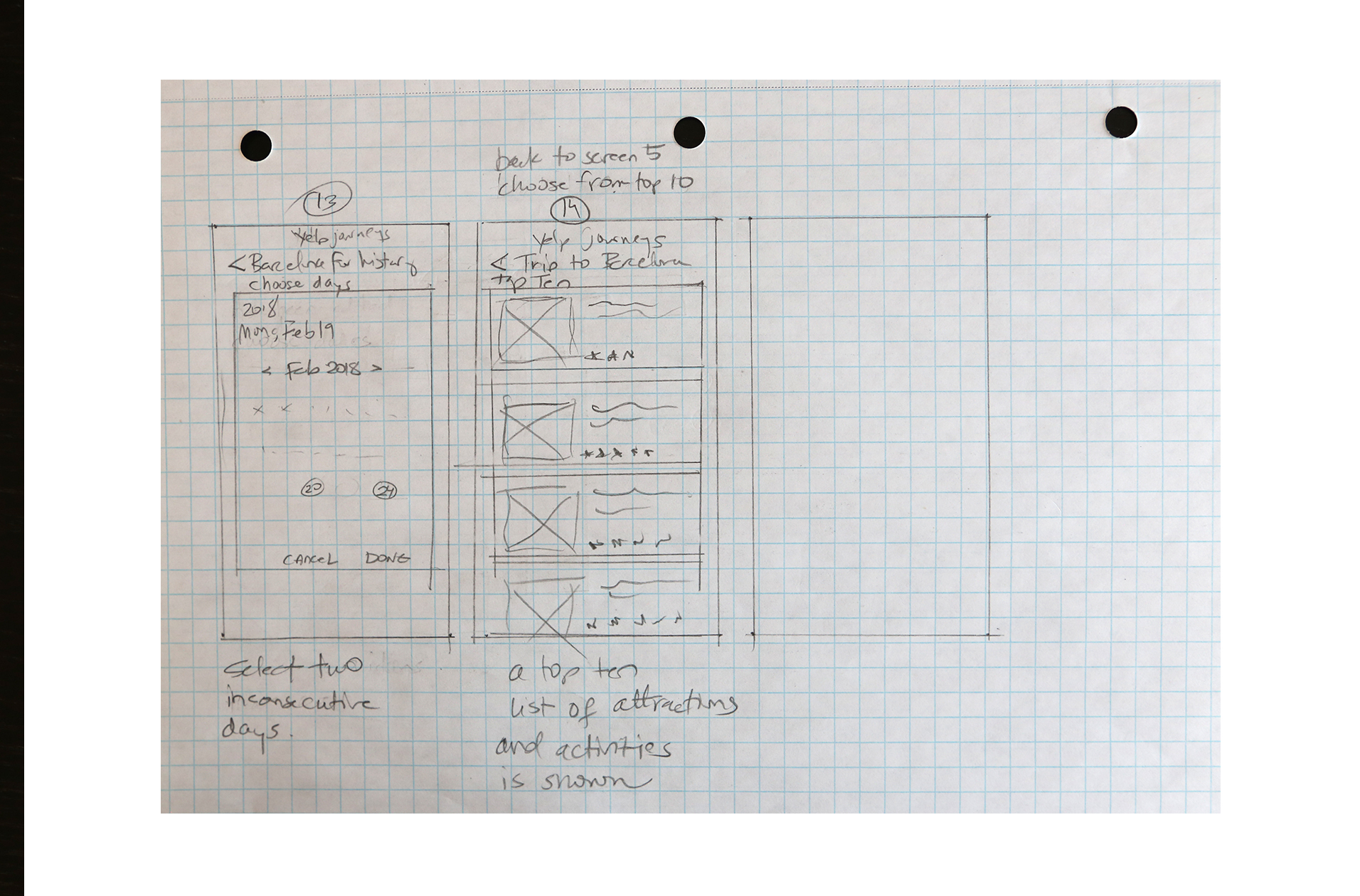
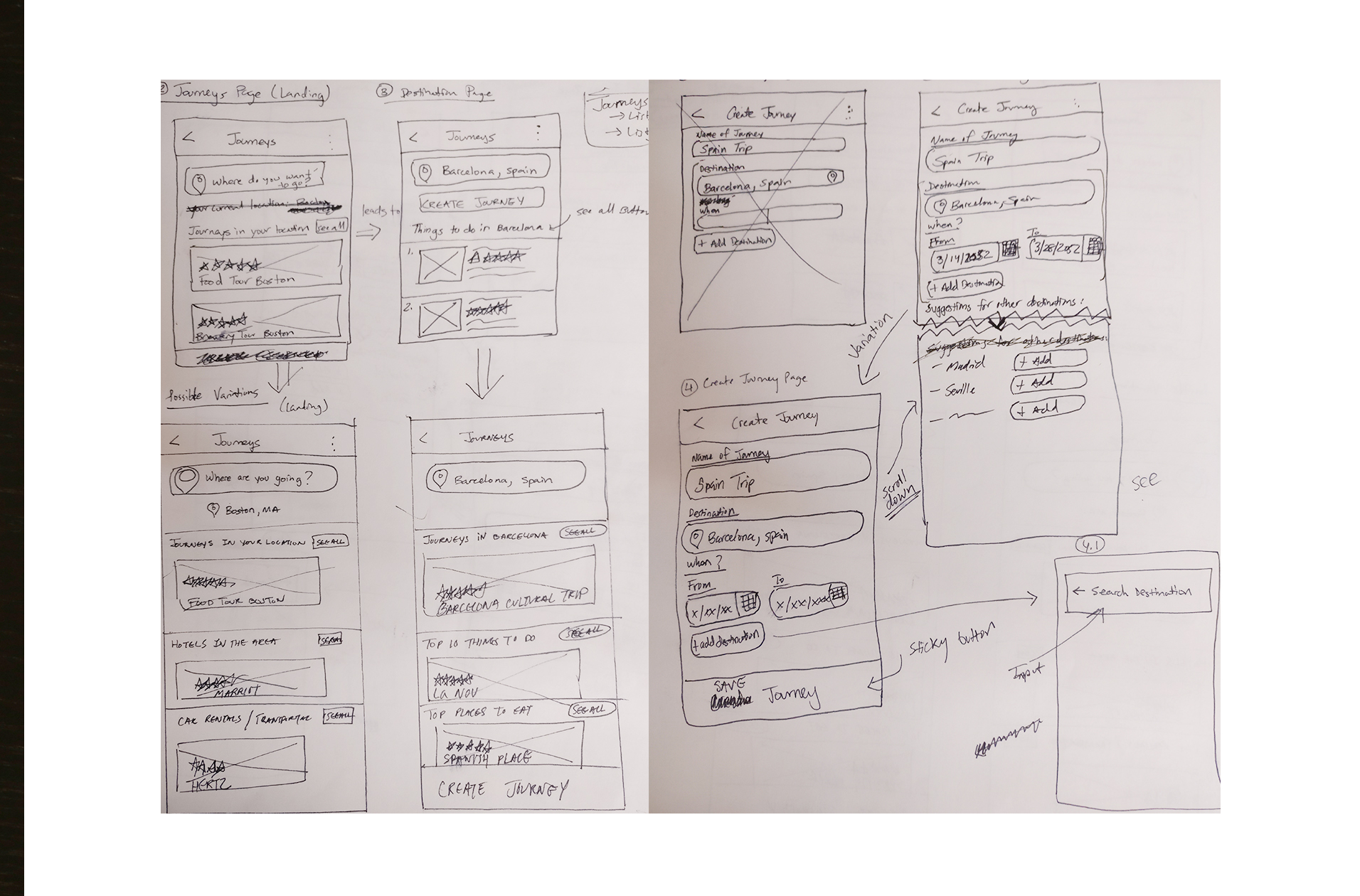
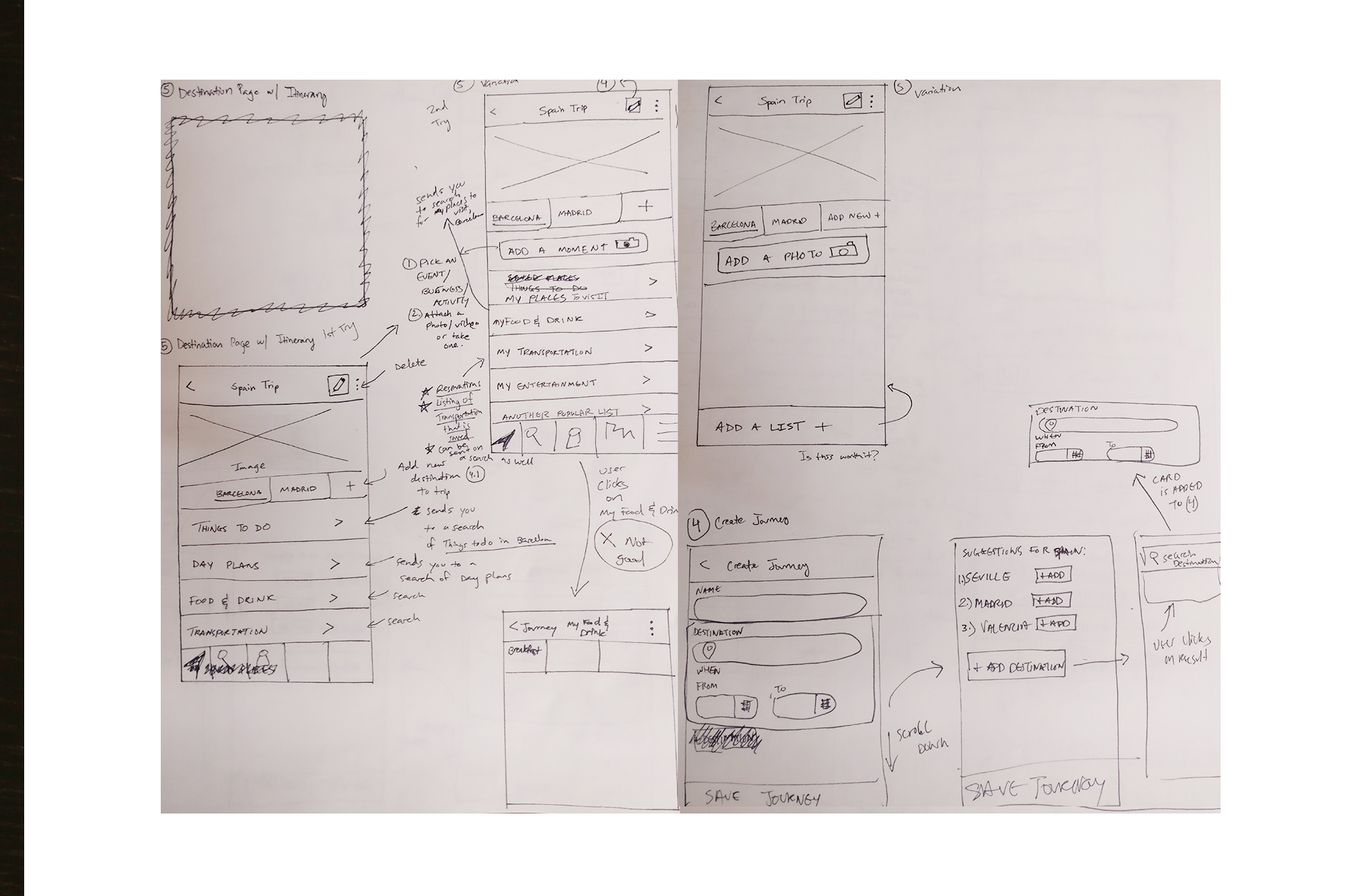
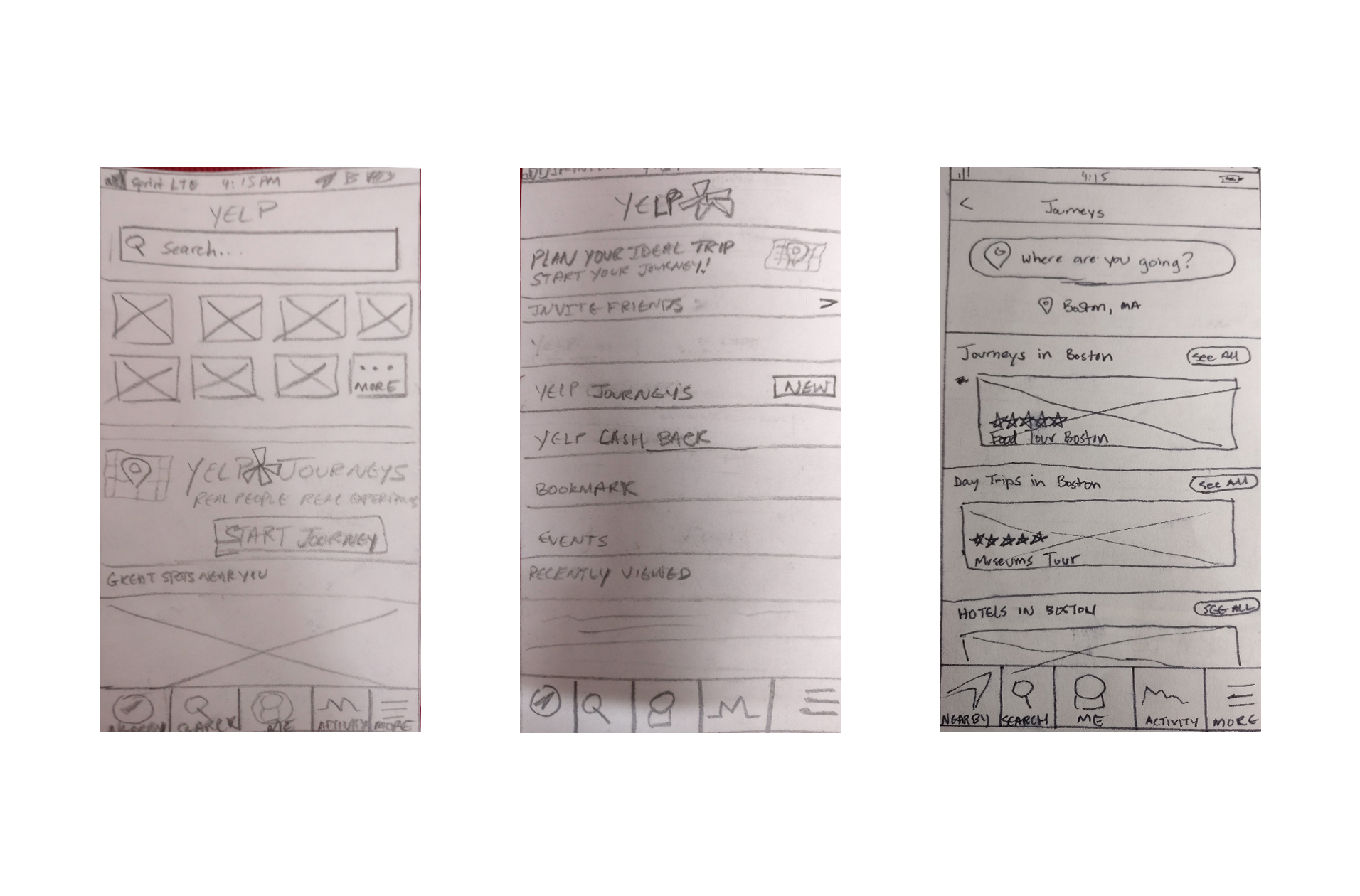

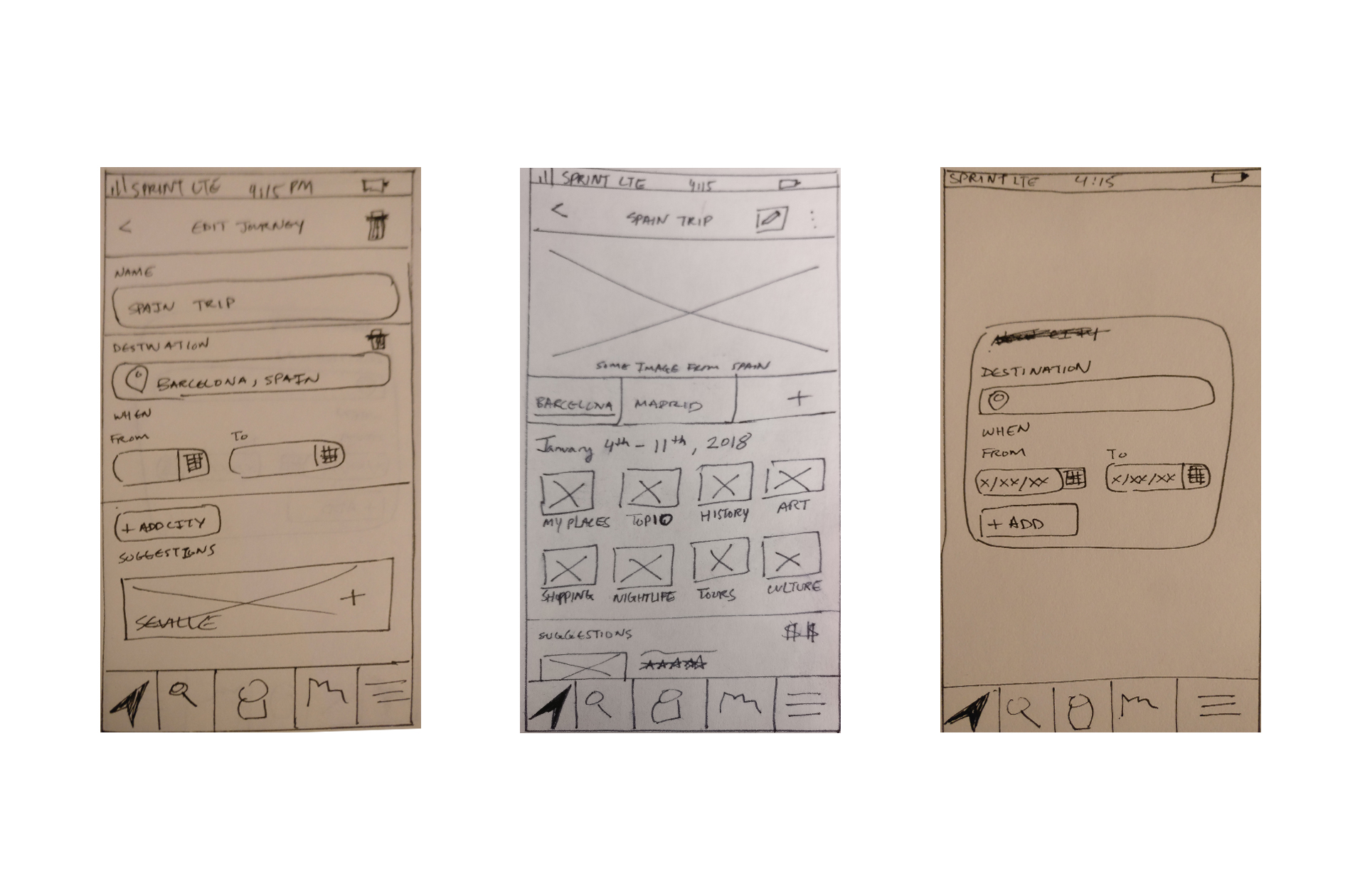

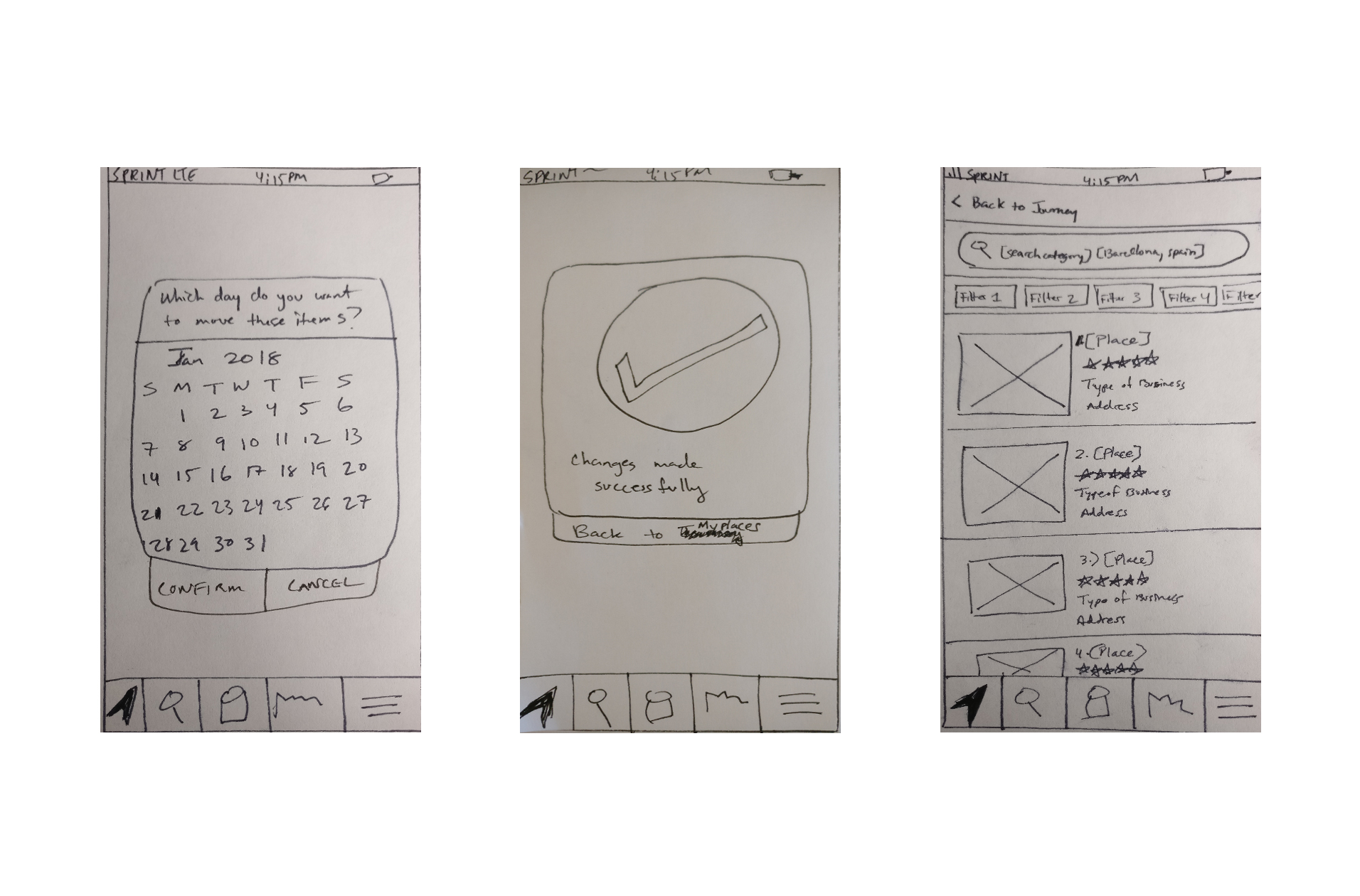
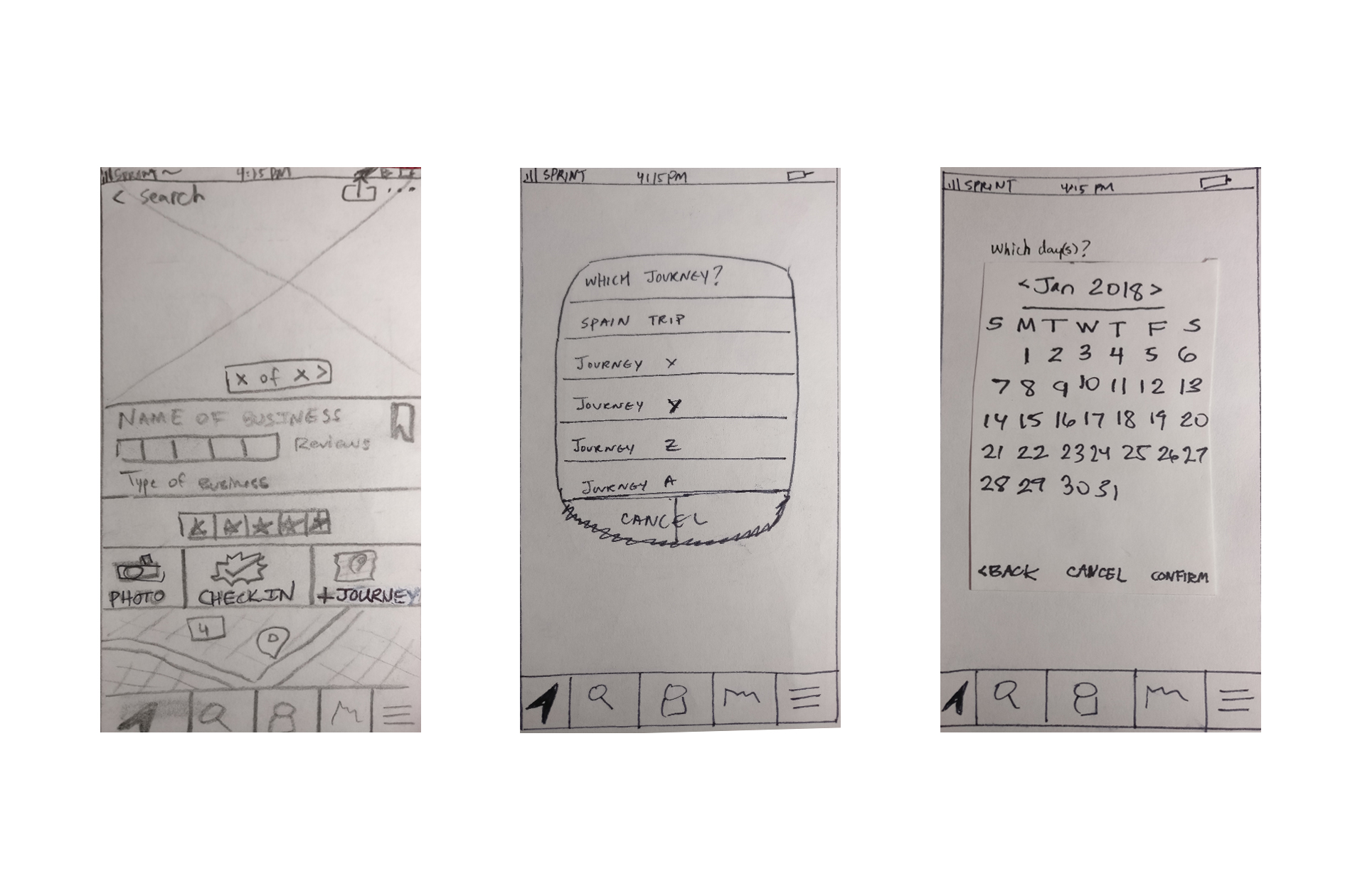
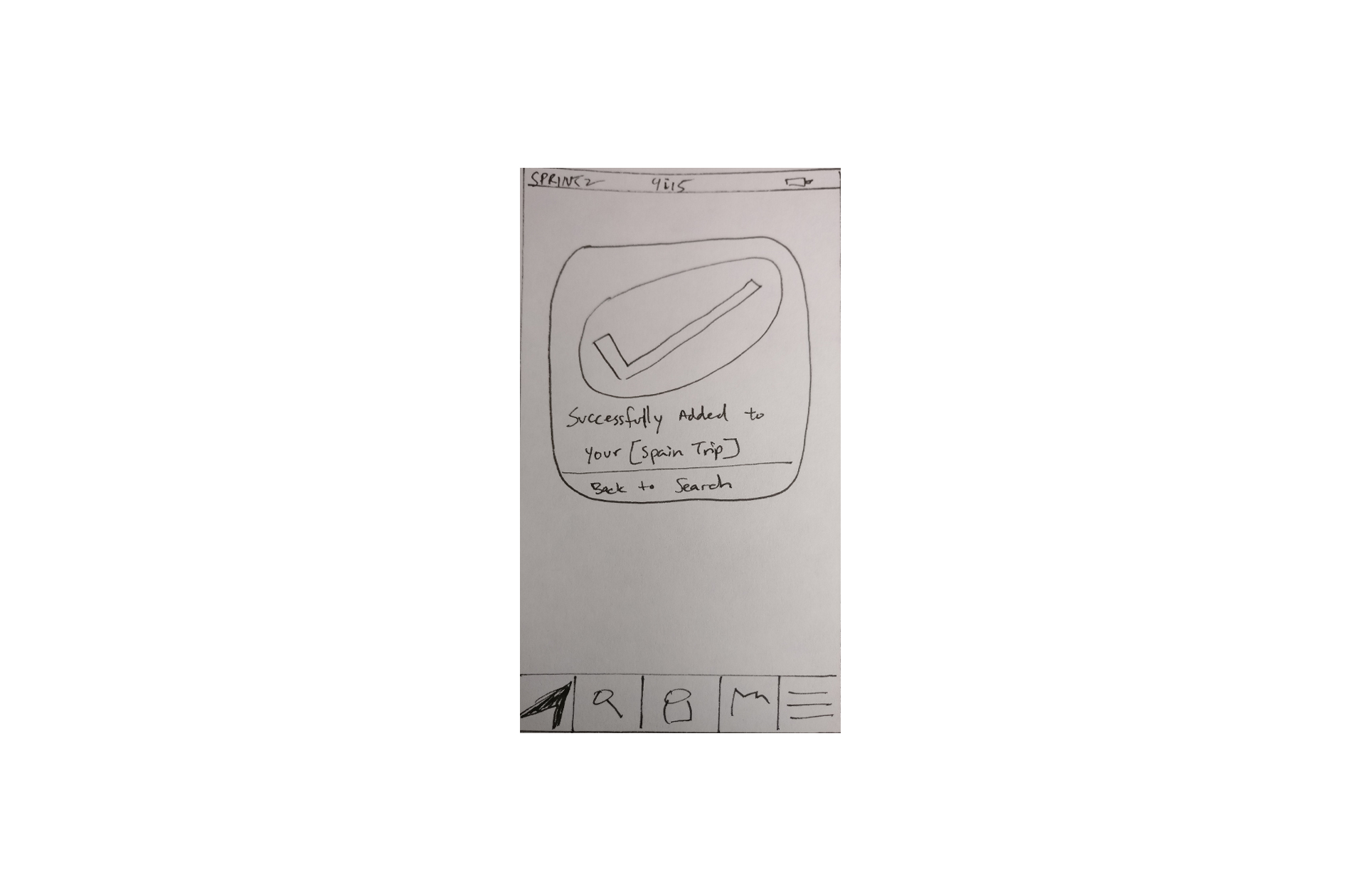
PROTOTYPE & ITERATE
MOBILE WIREFRAMES
After several rounds of iterations - I worked with my teammate to create a total of 49 wireframes that we designed and prototyped using Sketch.
DESIGN & VALIDATE
I worked side by side with my teammate to create all of the visual design for this project. This video demonstrates two of our user flows. First, a city is added to our trip and activities are added. Second, we add another city within our main journey with activities for that destination.
USABILITY TESTING
Usability tests were conducted with a focus on recording feedback, task completion time, and improvements using a testing script.
YELP JOURNEYS TEAM
Bethany Acheson: UX Designer
Allie George: UX Designer
Tushar Patel: UX Designer
Zipporah Legarde: UX Designer

















